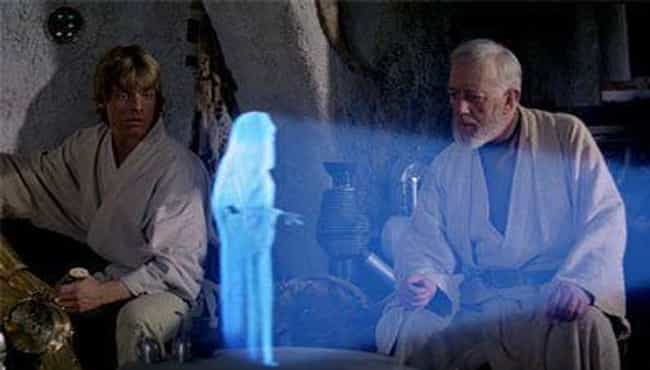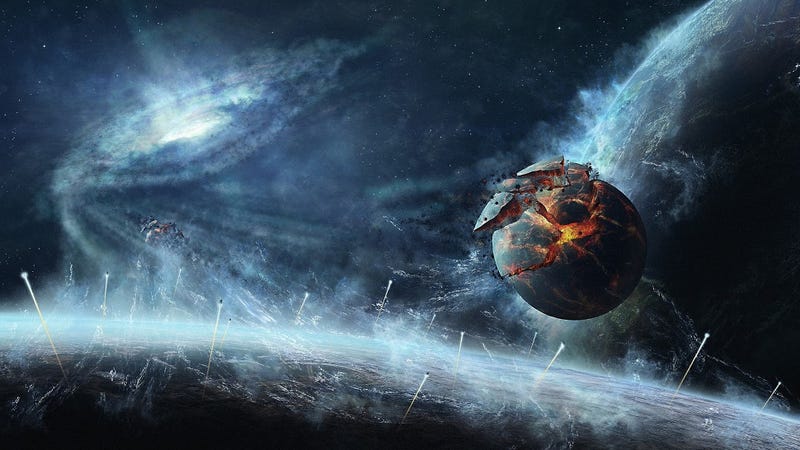Black holes. Portals. Dark matter. Parallel worlds. Team Instinct. As common as these terms are today, we're sadly still no closer to knowing the true nature of the universe we live in. To make things worse, we may never reach that day. We are still trying to reach that point.
But in attempting to understand these concepts, we use two distinct sets of rules: Quantum Mechanics, which is the study of all things super-small (atoms, quarks, Ant-Man on occasion), and General Relativity, which is the study of larger things (people, planets, also Ant-Man).
The issue? Two sets of rules don't exactly make it easy to explain the already mind-boggling terms listed above. For example, dark matter can be both infinitesimal and super-massive at the same time, so how can we possibly put something like this into perspective? That's where String Theory comes in.
String theory is a hypothetical explanation that could potentially unify ALL MATTER in the known universe, big or small. Wouldn't that make things so much easier to understand?
In theory, yes. But, like everything in our universe, the concepts presented within string theory are nearly-impossible for our feeble human minds to comprehend, and would undoubtedly only lead to more feelings of societal insignificance regarding our place in the cosmos, depression epidemics, and a global blanket of general malaise about this whole “existence” thing. String theory opens doors to a universe which is stranger than our imagination. So, that said, below are the most fascinating ideas presented within String Theory.
String Theory Holds That Everything Is Literally Connected
First and foremost, let's clarify that title. What do “strings” have to do with the universe? Does it mean we're all tied together in a marvelously delicate knot of energy, time, evolution, and coincidence?
Actually, it kind of does. According to string theory, all particles are just tiny vibrating strings called gravitons, with each type of vibration matching to a different particle across multiple dimensions (more on that next). In our current understanding of the universe, there are four dimensions: X (left-to-right), Y (top-to-bottom), Z (forward-and-backward), and Time itself. That is, we can move in three spatial dimensions, and time is constantly moving around us.
And those strings? They stretch across each one simultaneously, unifying time and space, and providing a common set of principles that can be applied to everything from atoms to galaxies.
But if that wasn't tricky enough...
There Are an Extra Six Dimensions (and They're Totally Crazy)
…try to imagine your existence within the additional six hypothetical dimensions created by string theory. It's hard enough rolling out of bed each day, but imagine knowing there's another you in another dimension, one very similar to our own, who's already showered and out the door. And is probably going to get a raise today. That bastard.
But why do you know your doppelganger is out there? Because you've just glimpsed into the Fifth Dimension, one originally posited by German mathematician Theodor Kaluza, and Swedish physicist Oskar Klein. Together, the two developed the Kaluza-Klein Theory, which is a unified field theory of gravity and electromagnetism. Through their research, Kaluza and Klein sparked the concept that if these two principles exist unseen, then perhaps they are emerging from another plane entirely.
From here, the crazy only intensifies: the Sixth Dimension is not just a world similar to our own – but an entire plane of possible worlds, all starting at the same time as ours. The Seventh, one that allows access to these theoretical planes, and which experiences time in an entirely different way than our own dimension. That is, dimenson seven's Big Bang could have started just a few million years earlier, and their Earth (relatively speaking) is still a little behind the evolutionary process – which might actually explain why you're not getting that raise today.
The Eighth and Ninth Dimensions are exponential variations on the seventh which would provide us with a kaleidescopal view of universes that have varying histories, laws of nature, perceptions of time itself, all culminating in the Tenth Dimension: an unfathomable realm in which everything about the known universe can be perceived all at once.
Forces from Other Dimensions Could Have Had an Effect on the Big Bang
Four forces of nature walk into the beginning of the known universe. Thankfully, this is not the third sequel to the box-office dud, Force of Nature. Although the consequences of any of the following going even slightly awry would be just as big of a disaster.
Nature has four fields: Gravity, Electromagnetism, Strong Nuclear Force, and Weak Nuclear Force. As stated above, string theory is an attempt to explain the behavior of all matter under one umbrella – and these four are the keys. By examining the behavior of each field, scientists have deduced that, although we cannot directly experience these other dimensions, there is at least abstract evidence, such as gravitational anomalies during the Big Bang, that could eventually prove their existence.
So, if nothing existed in our universe prior to the Big Bang – then what other gravitational forces could be pulling on it? This is where string theory strikes once again: if there really are other dimensions and parallel universes existing outside our own, then, in theory, it's very much possible their gravitational forces could have an effect on the beginning of ours.
The Universe Is Nothing More than a Projection
While string theory has been in existence for the better part of a century, it has often deviated into other forms as our ability to research the universe advances. So if you thought things were insanely complicated before, try to reverse your understanding of a massive three-dimensional universe that's constantly expanding – and, while you're at it, lose a whole dimension, too.
Like an on-stage recreation of Tupac Shakur, the “Holographic Principle” is a terrifying scenario that hopefully doesn't signify the direction we're collectively headed.
In 1997, physicist Juan Maldacena proposed a variation on string theory: if every particle in the universe is made up of strings, then what if each string exists in only two dimensions, yet holds all of the information necessary for us to visualize three? That is, the universe as we know it is nothing more than a flat plane of existence which sprawls out toward an infinite horizon.
On the surface (so to speak), it sounds a little easier to comprehend than similar theories, but if the universe is nothing more than a projection – what does that say about us?
Black Holes Could Be Portals to Different Dimensions
Okay, most of you probably saw this one coming. After all, with so many theories about the universe, wormholes are about as 'vanilla' as they come. It seems that with any bizarre theory out there, they somehow manage to fit in to nearly every single one. Talking about black holes? There's a wormhole nearby. Maybe a film about time travel? Better inject some scientific jargon about wormholes, two points connecting, instantaneous travel, and so on.
Point is, it's almost as if we've been dulled to how real wormholes could potentially be – especially when talking about string theory.
And with that in mind, we're also talking about multiple-dimensions. Thus, entering one end of a wormhole could potentially allow for travel not only between our universe, but into an entirely new dimension altogether. One that may not even have the same physical laws as ours.
Could this be a way to fully understand our entire universe? To potentially reach the theoretical tenth dimension?
The Universe Is Going Through an Endless Cycle of Creation and Destruction
Or, more specifically, branes. Short for membranes, long for their position in spacetime according to quantum mechanics, branes are hypothetical objects which live on strings themselves. But these aren't just “objects” in the traditional sense, but rather potential worlds sharing a space with those other six dimensions mentioned above.
And because of the nature of these branes, a new concept of the creation of our universe formed, one called the “ekpyrotic universe.” In this scenario, our universe is going through an endless cycle of creation and destruction.
So how do these branes come into play? One theory suggests that in between the universe's best day ever and worst of all time, perhaps two of these branes collided with one another, creating our dimension as the result. By researching this process, scientists have also gleaned that this type of cosmic smashing may hold the answers to what happened before the Big Bang.
At the end of the day (relatively speaking), string theory works to unite not just all matter in the universe, but potentially every field as we know it.
Via Ranker



/https://public-media.smithsonianmag.com/filer/b5/63/b56330e2-a779-4da6-a593-ae7b7510f1d5/cygx1illweb.jpg)
